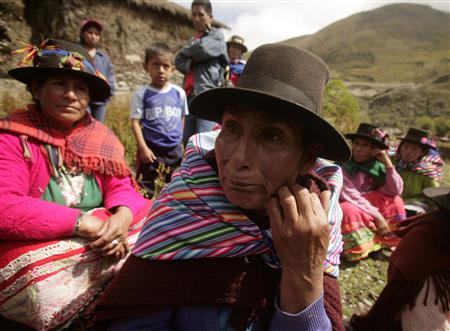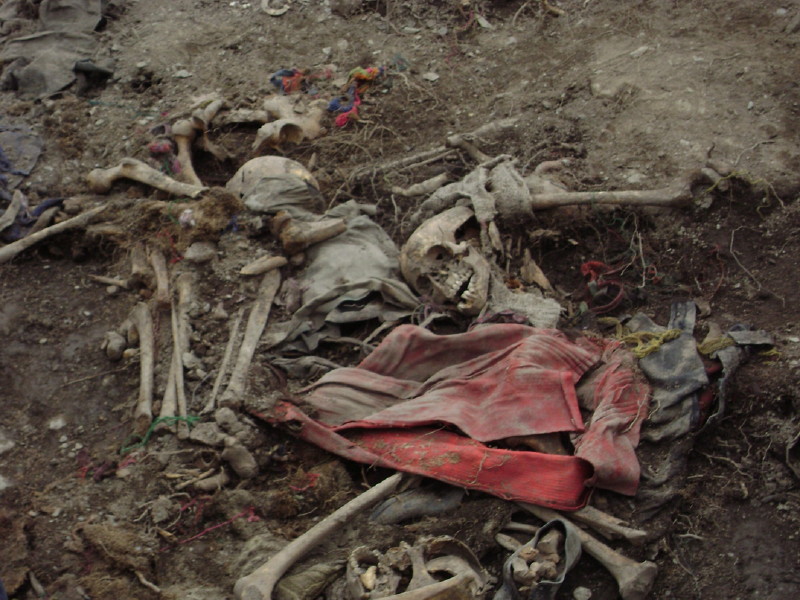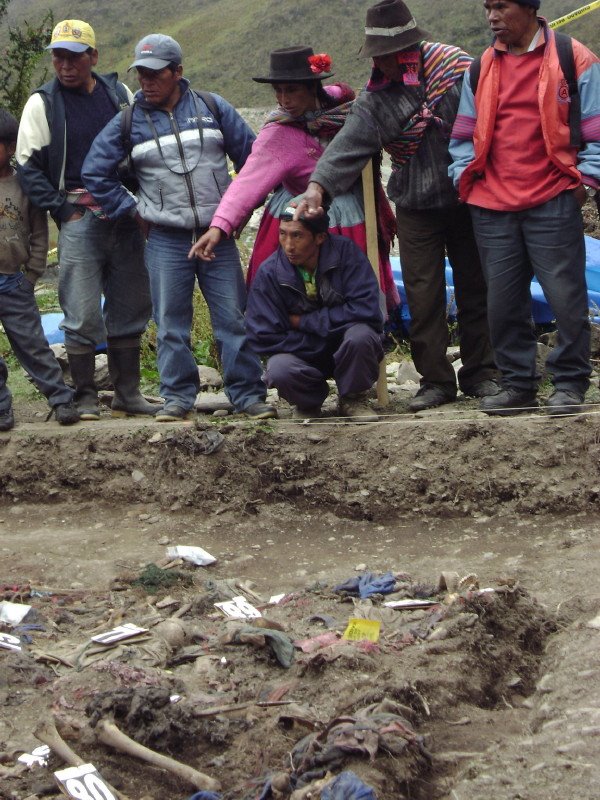The discovery and excavation of the mass grave at Putis, Ayacucho have been widely covered internationally as well as in the Peruvian press. Along with these articles have been a variety of images, some of them showing human remains in close detail, and others focusing on the emotions of the watching relatives.
Here is an example of the latter category:
 (Image: Reuters/Pilar Olivares, 'Years after slaughter, Peru opens giant burial pit')
(Image: Reuters/Pilar Olivares, 'Years after slaughter, Peru opens giant burial pit')A woman cries, her face strained with emotion, as she watches the forensics team investigate the grave site where, presumably, the bones of one or more of her relatives may be found. This images covers several recurring themes, I think. On the one hand it shows the apparently universal reach of human feeling; love, grief, loss, anguish. On the other hand, it contains many of the 'exotic' features that often come to the fore in the representation of highland Peru: women in indigenous dress (the man and boy visible are not wearing traditional clothes), somewhat inscrutable expressions, glimpses of stunning landscape in the background. The people are displayed as rather passive figures, looking on as others labour at the burial site. This is, in fact, the reverse of what happened during the original massacre, when the local villagers were forced to dig their own grave before being killed.
In harsh contrast to the photographs of the living are those that focus on the dead:
 (Image: Copyright IPS, courtesy of Asociacion Paz y Esperanza, RIGHTS-PERU: Unburying the Evidence of Biggest 'Dirty War' Massacre)
(Image: Copyright IPS, courtesy of Asociacion Paz y Esperanza, RIGHTS-PERU: Unburying the Evidence of Biggest 'Dirty War' Massacre)I was startled by the explicit nature of these images at first. Although we seem to find the display of bones less distasteful than that of recently dead bodies - I'm not certain why - these are still images of actual human beings. They are not laid out on a slab in a mortuary either; they are jumbled, thrown, in a muddy pit. Pieces of clothing are still intact and form the only splashes of colour on the image. The chaos, the lack of respect for the dead, the pitiful end that came to men, women and children in Putis in 1984 are all here in this image. But still, the close-up on the human remains is discomfiting.
Finally, the same article also uses this image:
 (Image credits as above)
(Image credits as above)Both elements - the observing relatives and the bones - are combined in this image, which to me is the most aesthetically satisfying. The indigenous villagers are not passively sitting by, but actively witnessing the exhumations process. Several of them are pointing into the burial ground, perhaps having recognised an item or clothing or equipment that has survived the 24 years underground. Painful though the experience must be, they may finally gain some answers as to the fate of their loved ones. The camera does not seek out the skeletons alone, but reveals the investigations taking place.
The IPS article quotes the head of the Asociacion Paz y Esperanza as saying:
The excavation is a very special case, because of the humanitarian aspect: no one listened to the locals, who are mainly (indigenous) Quechua speakers.May these wrongs somehow, belatedly, start to be righted.



